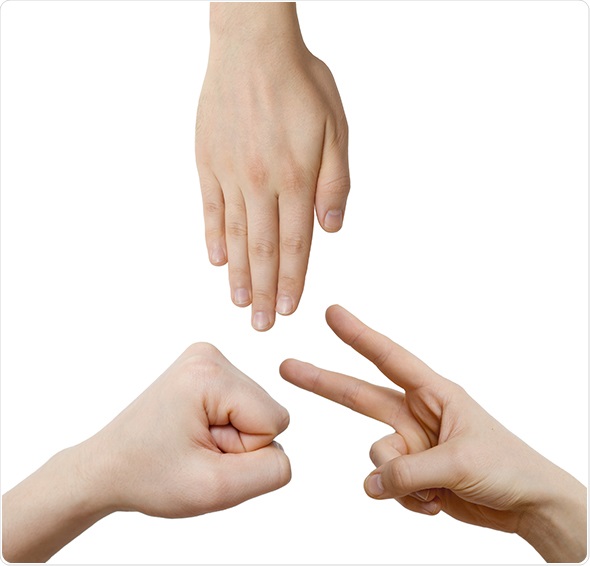Kate Bass BSc
A man who had been paralysed from the neck down for 11 years has been given a prosthetic arm that he can move smoothly and fast enough to play 'rock, paper, scissors'.
Paralysis is often the result of nerve damage that prevents commands from the brain being relayed to muscle to cause movement. Patients affected in this way maintain the capacity to think and form intentions of movement. These intentions can be picked up by the electrodes of microchips implanted in the brain, which then send the signal to an artificial limb, causing it to move.
 Shutterstock.com / grey_elkin
Shutterstock.com / grey_elkin
Many patients suffering paralysis or amputation have received implants in the brain's motor cortex (the area that initiates movement), which allows them to move an artificial limb by thinking about the required movement. This latest case differs in that two small silicon chips were implanted in the posterior parietal cortex (PPC) of the brain (the area responsible for action planning) where they pick up the patient's intention to move rather than the instruction to move (as received from the motor cortex). Consequently, the patient can control movement by thinking of the desired end result, eg, lift the glass off the table. This provides more spontaneous, natural-looking movement compared with the often delayed and jerky movements achieved through motor cortex implants.
A pair of small electrode arrays (one for grasp and one for reach) were surgically implanted in the patient's PPC at Keck Hospital of USC in April 2013. Each array contains electrodes that transmit activity of single neurons in the PPC to a system of microcomputers that process the signals and move the robotic arm accordingly. Soon after the surgery, the patient was trained by Caltech researchers and staff at Rancho Los Amigos to visualise movement of his arm and was quickly able to achieve fluid, intuitive movement of the robotic arm. He commented "I was surprised at how easy it was [to control the robotic arm] ...I remember just having this out-of-body experience, and I wanted to just run around and high-five everybody”.
Principal investigator, Richard Andersen commented "The reason we are developing these devices is that normally a quadriplegic patient couldn't, say, pick up a glass of water to sip it, or feed themselves. They can't even do anything if their nose itches. Seemingly trivial things like this are very frustrating for the patients. This trial is an important step toward improving their quality of life". He explained that the study had also improved understanding of the PPC allowing further refinement in future neuroprosthetics, "What we have here is a unique window into the workings of a complex high-level brain area as we work collaboratively with our subject to perfect his skill in controlling external devices".
Mindy Aisen, a clinical professor of neurology at the Keck School of Medicine of USC highlighted the promise this research holds for the future of patient rehabilitation "We have created a unique environment that can seamlessly bring together rehabilitation, medicine, and science as exemplified in this study”.